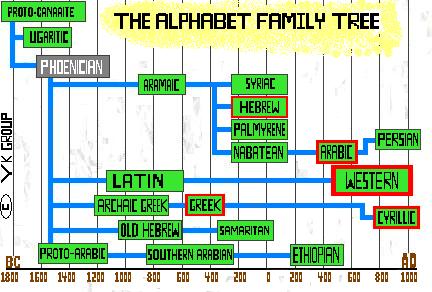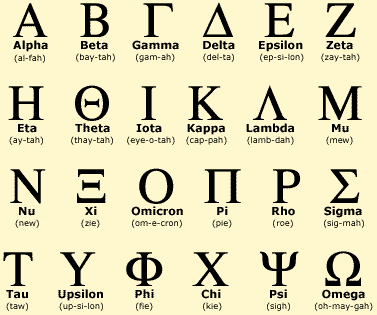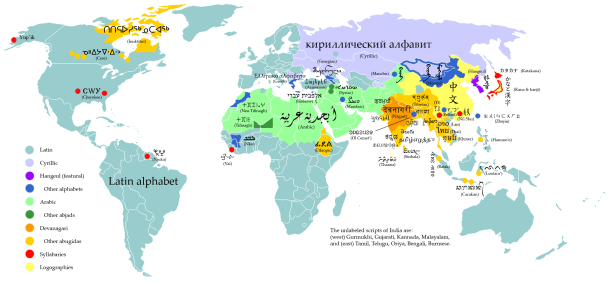Do You Know?
A B C D E F G H I J K L M N O P Q R S T U V W X Y Z
Although we call it the Latin alphabet, and it has a Greek name, the alphabet actually has far older origins.
We all learn our ABC’s as children, but do we know where the alphabet comes from? We call it the Latin alphabet, but then why does it have a Greek name? The alphabet wasn’t invented by the Greeks either. Where does it come from?
Egypt, Sumeria and the Origins of Writing
Writing began in ancient Mesopotamia and ancient Egypt. Both writing systems were developed independently, and they are very different from each other.
- Cuneiform. Cuneiform is the system of writing developed by the ancient Sumerians, between 3500 and 3100 BC. Sumeria was one of the first civilizations to develop in the world. It resided in the area of what is now Iraq, between the Tigris and Euphrates rivers. Their system of writing consisted of wedge shaped marks made with the edge of a stylus pressed into clay. The clay would then be baked so the marks could not be removed. “Cuneiform” is a Greek word meaning “wedge-shaped.”
- Hieroglyphs. The ancient Egyptians, another of the first civilizations, developed a very different system of writing than the Sumerians. It was developed about the same time as cuneiform, but involved tiny pictures or glyphs which were used to represent words.
Neither of these writing systems incorporated a true alphabet. The majority of symbols were used to identify whole words, or multiple syllables, unlike our own monosyllabic alphabet. Because of this they incorporated a far greater range of symbols in order to write than cultures using an alphabet.
The Phoenicians and the First Alphabet
The developers of the first true alphabet were the Phoenicians. The Phoenicians originate from the coast of the Mediterranean, in what is now Lebanon. They were a trading and seafaring culture, and had contact with both the Egyptians and the Sumerians.
The Sumerians had originally developed their writing system in order to make trading easier, and so it would be with the Phoenicians. However, the system of writing developed by the Phoenicians would be very different than that created by either the Egyptians or the Sumerians.
The Phoenicians had closer contact with the Egyptians than with the Sumerians. For much of their history they were at times under Egyptian control. Their writing symbols developed somewhat from Egyptian hieroglyphs. The Phoenician symbols did not represent entire words, though, but rather single syllables.
Having forms that represent a single syllable allow for much more freedom in writing with far fewer symbols. It also allows for the easier writing of words in other languages, because the writing is based on sounds rather than what the word actually means. Any new word that you come across can easily be adapted to writing based on the sound of the word.
The Phoenician alphabet took several centuries to develop, but had been fairly well completed by about 1000 BC, over 2000 years after the development of the first writing system in Sumeria.
The original Phoenician alphabet consisted of 22 letters, none of which were vowels. Other alphabets such as the Hebrew alphabet would not contain vowels. While many of the symbols have great similarity to our own letters, they often represented very different sounds. For example, there is a letter which looks like an x, but rather represents the “taw” sound.”
The Phoenicians were the major traders on the Mediterranean, and they took their alphabet with them as they traded. Many different cultures began to pick up their alphabet, and modify it to their own uses. The most important of these cultures in the ultimate development of our own alphabet were the Greeks. However, there are still remnants of its Phoenician origin in our own language, as we still call the study of how letters actually sound “phonetics.”

Phoenician words are found in Greek and Latin classical literature as well as in Egyptian, Akkadian, Arabic, Aramaic and Hebrew writings. The language is written with a 22-character alphabet that does not indicate vowels.
The Greek Alphabet
It is from the Greeks that we get our name for the word “alphabet.” It comes form the first two letters of their alphabet, Alpha and Beta. These names actually came from the Phoenicians; however, whose first two letters were ‘Aleph and Beth.
Scholars are not quite sure when the Greeks first came into contact with the Phoenician alphabet; however it seems to have been about 1000 BC. They changed the alphabet some, both the look of the symbols as well as adding some symbols of their own. For example their alphabet had an F character, unlike the Phoenicians, although it originally stood for the “w” sound.” Because different languages use different sounds, the need to create new letters was common as the alphabet was distributed.
The Greeks were the first to introduce vowels into the alphabet. While the Phoenicians did have the letter “aleph” which became “alpha,” it originally represented a gutteral tone, rather than what we consider the letter “a.” Within Greece there were many different alphabets, most of them had about 25 letters and were mostly similar, with some slight differences.
The Latin alphabet
The Etruscan peoples of Italy picked up the alphabet from the Greeks, in about the 7th Century BC, and from the Etruscans it ultimately came to the Romans.
During its nearly thousand year history, the Roman Republic and later the Roman Empire grew to be the most influential power in the world, and one of the most influential empires of history. At its height the Roman Empire spread from England to northern Africa, from Spain to Mesopotamia.
The Roman Empire collapsed in the 5th Century AD, but its alphabet would remain. The illiterate barbarians who conquered the remains of the Roman Empire would ultimately adopt its alphabet as they developed their own written languages.
Many of the new countries formed in the aftermath of the Roman Empire would actually adopt Latin as their language as well as the Latin alphabet. Spanish, Portuguese, French, Romanian, and Italian are all descended from the Latin language. Those countries such as Germany and England that did not adopt the Latin language still adopted the Latin alphabet into their written language.
Changes to the Latin alphabet
There have been some changes in the Latin alphabet since it was finalized under Roman authority. Originally the letter C stood for both g and k. The letter I stood for both i and j. V stood for both U and V.
The original alphabets did not have lower case letters. Lower case letters came during the Middle Ages, with the development of cursive writing. Prior to the Middle Ages all writing was done in print. It was during this time that the English picked up the Latin alphabet, and eventually brought it to us.
The alphabet has undergone many changes in its thousand years of history, but it has become the most used alphabet in the world today. It is used all across Europe and around the world for thousands of different languages, including, of course, our own.




The large Phoenician alphabet chart which you show here is good. There are other charts you might use. Thank you.
this was gud and useful.the chart was represented very well…a gud site..
This is the best article I’ve read on the origin of our alphabet.
Great site, I will be back. Well done
i like the Greek alphabet…..
i love the Greek alphabet….
l’ve learned a little about the greek alphabet.Now for the roman numerals.
Thanks for this,im learning greek so quick,this is great.Keep it up!
The Alphabet calender is good. Got to know how became civilized
These are actually great ideas in concerning blogging.
You have touched some fastidious things here.
Any way keep up wrinting.
You are so cool! I don’t believe I’ve read something
like that before. So great to find another person with a few unique thoughts on this subject.
Seriously.. thanks for starting this up. This website is something
that is needed on the web, someone with some originality!
well done! i like the article.
its a really good article.